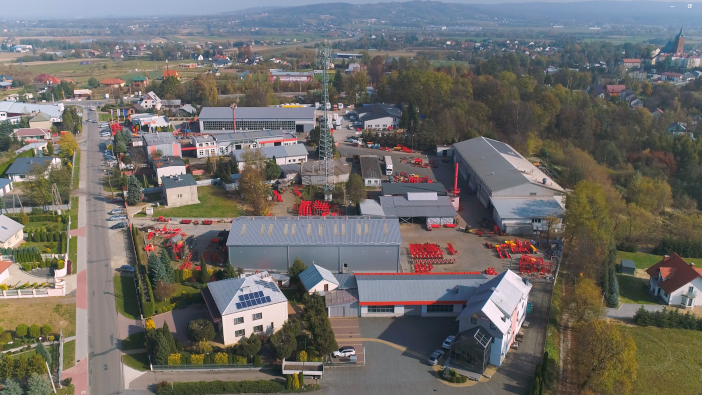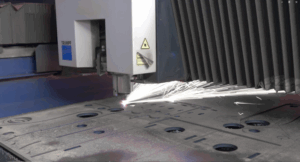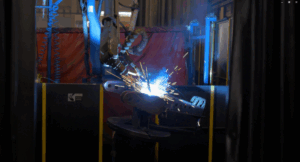Concluding a trilogy of Polish factory visits, Matt Tilt visits Akpil, which has its sights set on the UK market.
Akpil has the distinction of being the first company in Poland to develop a disc harrow, and now offers products across Europe, including Ireland, and as far afield as Mexico. Now celebrating its 50th anniversary, it also stands as one of the oldest Polish agricultural manufacturers.
Continuously looking to extend its reach, it is now looking for agricultural dealers in the UK. The company has some history here, with its amenity products, including snow ploughs and snow blowers, once being imported. However, as the company tightens up its product range to focus on cultivation, drilling and potato machinery, it has started to discontinue certain lines.
According to Anna Ciochoń, sales, one of the unique selling points of Akpil machinery is that the company designs and makes around 95% of the components used, with up to 6,000 machines coming off the production line each year with a team of around 140 people. The manufacture of components also enables the company to be price-competitive in a market that is heavily contested.
Around 70% of the total production is exported, and the company has dedicated sales subsidiaries in France, Germany, Georgia, Greece, Hungary, Kazakhstan, Norway, Sweden, Spain, and Uzbekistan. The factory, which is just outside of Pilzno, not far from the city of Tarnów in southeastern Poland, is laid out with one production line for seeders and planters, and one for cultivation equipment.
Offering a huge array of products enables the company to adjust production quickly and build in batches based on demand for the upcoming season. Despite this, Anna says that nothing is built for stock, with every machine having a customer.
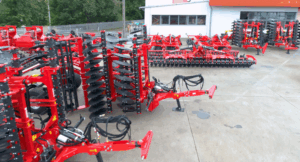 Building in-house
Building in-house
Akpil was established by Kazimierz Anioły in 1975, who remains in place as the CEO today. Initially focused on machine distribution and servicing, including for the automotive market, the company moved into agricultural manufacturing in 1985 and a year later launched a range of potato planters. Other products include cutter bars and cultivation machinery.
In 1991, the company launched the first Polish-built potato harvester. This trailed model would be a hugely successful model for the company and has been continuously developed over the last thirty years, resulting the Kartoffel machine, which has a bunker capacity of up to 5,000 litres and can be pulled with just 70hp up front.
The decision to bring nearly every aspect of production in-house, including the development and building of ECUs for electronic components and precision farming compatibility, allows the company to maintain a level of quality throughout its manufacturing.
High tensile steel sheets are delivered and put through of laser cutters to create components. In the case of soil-engaging parts, such as the discs for the company’s harrow range, these are then heat-treated and pressed into shape. Other components are moved into welding bays, where robotic welders start to build sub-assemblies. For larger assemblies, the company also has manual welding bays.
Sub-assemblies are shot-blasted and painted with electromagnetic paint before being dried in the oven. Painting is done by members of the team, who can ensure that every part of the machine is coated. The factory itself was heavily renovated throughout the 1990s, increasing the total area to more than 20,000sq m and then completely refitted with automated processes in 2008.
Jumping back a few steps, the design process is handled in-house with CAD design processes and digital strength testing to speed up the process from idea through to prototype. On more complex machines, the company works with the Industrial Institute of Agricultural Engineering in Poznań. Anna notes that this has allowed the company to integrate modern technology in a bid to make machines more appealing to central and western European markets.
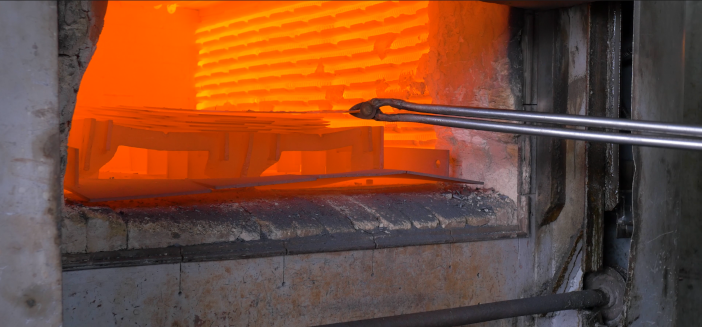
Adding technology
Two market developments are currently driving product design at Akpil. The first is the demand for wider machinery, which can be seen in the company’s new Bison XXL disc harrow. Available in working widths from 8m to 12m, with up to 96 Akpil-build discs in 560, 610 or 660mm diameters, it can be specified up to full hydraulic adjustment, including disc angle adjustment, from the cabin.
For the drill and precision planter range, the company is starting to integrate Isobus control into its flagship machines. Anna states that this will enable greater control, with technologies including variable rate and section control being available. There is also an acknowledgement that customers are looking for less downtime, so larger pressurised tanks are being developed, alongside split tanks for seed and fertiliser application.
Within its seeding technology, the company has a patented metering system, which joins the multiple patents the company has been awarded for its cultivation and drilling systems, including multistage depth adjustment and individual adjustment of all working components.
Another new product due for release this year is a mulch and tine weeder, with Anna noting that the company recognises the need for mechanical weed control, alongside the company’s range of mounted and trailed boom sprayers, and the range of vineyard and orchard machines.
The Mulch weeder is set to 7.5m wide, with wider units in development, and comprises a row of cutting discs to chop and bruise weeds between crop rows, followed by four rows of harrow tines to uproot and spread plants to dry out in the sun.
It can also be used for pre-cultivation of crop residues, with aggressive tines distributing trash across the field surface. It’s also possible to establish catch crops with a mounted seeder box, adding an operation to the shallow tillage and aeration effect.
Options include hydraulic adjustment of the cutting discs, a knife roller to break up residues with shock absorption and hydraulic adjustment, a front levelling bar and the seeder box.
A full range
By running a full product portfolio, the company not only is able to keep the factory at full capacity throughout the year but can also adjust its offering to different markets. While Akpil is happy to sell any of its products to new territories, which includes its full range of potato equipment, from planters and tillers, through to rotary harrows, harvesters and fertiliser machines, and a small range of grassland mowers; for the UK the company is primarily looking at the cultivation and seeding products.
Ploughs up to eight furrows are available, with in-house manufactured bodies, non-stop stone protection and the option of hydraulic width adjustment. The disc harrow range is primarily built around the Bison series, with the standard running up to 4m, the XL available in widths up to 6m and the XXL going to 12m.
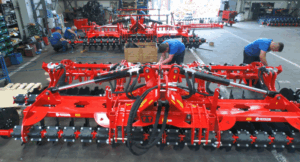 There is the Gepard range, which can be linked to a seed drill for single pass cultivation and sowing. Finally, there is a range of box drills and pneumatic drills for cereal crops, and a precision planter for maize and sugar beet.
There is the Gepard range, which can be linked to a seed drill for single pass cultivation and sowing. Finally, there is a range of box drills and pneumatic drills for cereal crops, and a precision planter for maize and sugar beet.
The Seed Corn drills can extend up to 4m in width, while the precision planters can be offered with up to eight sections, with row spacings from 400mm up to 750mm. As mentioned, these are now available with Isobus compatibility, offering a small working width for tight, awkwardly shaped fields, or farms looking to bring sowing in-house, while matching some other offerings with suitability for variable rate and section control.
As the company can adjust production quickly, Anna notes that they can also work with distributors and end customers to build bespoke machines to suit different applications. She concludes that the company is looking to increase the complexity of its machines and consolidate its portfolio to offer a clear alternative to other manufacturers on the market.
While the company currently has no distribution within the UK, it is looking for an importer and local dealers to provide sales, backup and support. Customers who are interested in the product offering can also work direct with the company to import machines.


